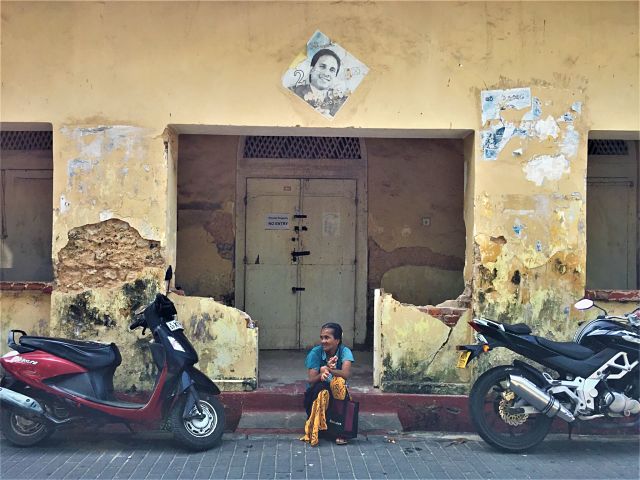He has further said that “We are the ones who created an environment for you to live in peace and harmony. We are not the ones who disrupted peace. We have made plans to invest more to scout skilled youth who may not have adequate educational qualifications and to provide them jobs. The former regime carried out a number of development projects countrywide, but the incumbent government has failed to keep up the momentum. I invite you to give us the power to continue with development projects,” he said.
According to latest world bank figures addressing a nearly 45 percent of Sri Lankans live on less than $5 a day. This means that living standards in certain areas of the country are very low. This means that Rajapaksa will have to create at least a 2-3 million government jobs in Sri Lanka. This will further enlarge already over sized state sector in Sri Lanka, says political observers.
Top 10 Facts about Poverty in Sri Lanka
- Poverty occurs in concentrated pockets in Sri Lanka. For example, former conflict districts such as Mullaitivu and Mannar have 28.8 and 20.1 percent of their citizens living in extreme poverty respectively. Extreme poverty rates are also high in the Batticaloa district (19.4 percent) and in the Monaragala district (20.8 percent).
- While certain areas have very high rates of extreme poverty, most poverty in Sri Lanka occurs in affluent districts such as Kurunegala. The Kurunegala district houses 7.7 percent of the country’s poorest citizens as opposed to the combined 3.4 percent in Mullaitivu and Mannar.
- About 85 percent of Sri Lanka’s poor live in rural districts, which often lack quality access to education. Rural pre-schools, for example, are often private and for-profit and oftentimes inaccessible or unavailable to poor families. Even if a family can afford pre-school for their children, the schools are little more than playgroups and do not provide an adequate education.
- Lack of quality education leads to rampant unemployment, as seen in many rural areas across Sri Lanka. Reportedly 27.7 percent of Sri Lanka’s youth, ages 15 to 24, are not receiving an education, training for future employment or are currently employed.
- Nearly 45 percent of Sri Lankans live on less than $5 a day. This means that living standards in certain areas of the country are very low.
- There are high rates of undernourishment, stunting and malnourishment in Sri Lanka, especially in children. An overall 22.1 percent of Sri Lanka’s population is undernourished, meaning they do not have enough to eat. In fact, 17.1 percent of Sri Lankan children under the age of five are malnourished and lack access to balanced diets; 17.3 percent of children under five have stunted growth, meaning they are too short for their ages.
- About 4.4 percent of Sri Lankans still lack access to electricity. Lack of electricity means that this population also lacks the benefit of refrigerators, washing machines and any other type of technology. Without technology or internet access, this population does not have access to opportunities that could help lift them out of poverty.
- Women, rural women especially, are not very economically active. Gender roles in Sri Lanka dictate that women do the bulk of unpaid care work in their households. Women are often responsible for rearing and educating their children, caring for elderly or sick family members, cooking and collecting daily water. Many women do not have time to earn money of their own and become financially independent.
- Sri Lanka’s growth rate reached a 16-year low in 2017 at 3.1 percent. Such an occurrence means that the nation’s rate of economic growth is in decline.
- Despite environmental disasters and other factors, poverty in Sri Lanka is actually declining. From 2006 to 2016, the rate of extreme poverty declined from 15.3 percent to 4.1 percent, which is among the lowest rates of poverty in the region.
Looking Forward
According to the World Bank, Sri Lanka’s economic outlook remains favorable despite recent declines. The organization reports, “Growth should continue to translate into poverty reduction and improvement in living standards.”
The country still has a long road ahead recovering from civil war and facing ongoing environmental crises, but the declining trend in poverty is a good sign for Sri Lanka’s future.
– Kathryn Quelle / https://borgenproject.org/the-most-pressing-facts-about-poverty-in-sri-lanka/
Above photo courtesy of brogenproject.
